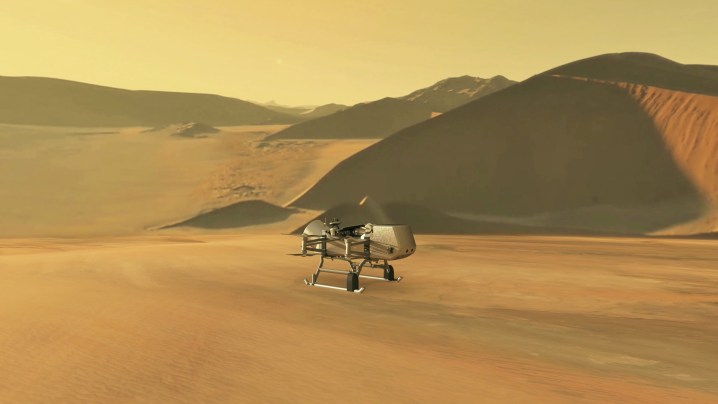With the success of the Mars helicopter Ingenuity, we’ll soon be seeing more robotic explorers which observe distant locations in the solar system from the air. Set for launch in 2034, NASA’s Dragonfly mission will be a robotic rotorcraft for exploring Saturn’s moon Titan — a location that is particularly intriguing because it is thought to be potentially habitable.
Titan has a thick atmosphere and low gravity, making it relatively easy for rotorcraft to stay in the air and explore the moon from above. The mission is particularly aimed at assessing the habitability of the moon by studying both its atmosphere and its surface, getting up close to areas that are hard to study from orbit due to the thickness of the atmosphere.

To enable this study, Dragonfly will carry an instrument called the Dragonfly Mass Spectrometer (DraMS), and NASA has recently shared more information about this instrument and how it will operate. Similar to the system on board recent Mars rovers, this instrument is used for analyzing samples which will be collected by a drill called the Drill for Acquisition of Complex Organics (DrACO).
Once DrACO has collected a sample, the mass spectrometer bombards it with energy so its molecules become ionized. The instrument can then sort these ions by their mass and charge, and then measure these sorted ions to show what the sample is composed of.
This means that DraMS will be able to tell what the surface of Titan is made of, for example. And the researchers are particularly interested in whether the surface has a chemical makeup that could lead to the formation of life.
“We want to know if the type of chemistry that could be important for early pre-biochemical systems on Earth is taking place on Titan,” explained Melissa Trainer of NASA’s Goddard Space Flight Center, in a statement. “DraMS is designed to look at the organic molecules that may be present on Titan, at their composition and distribution in different surface environments.”
This information will help us understand whether Titan could be potentially habitable and understand the chemistry that is required before life can evolve.



